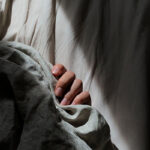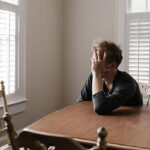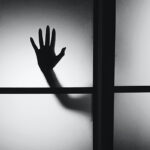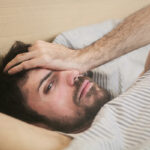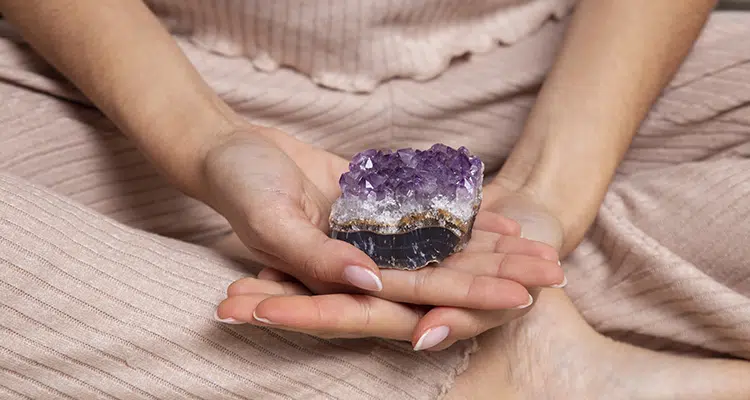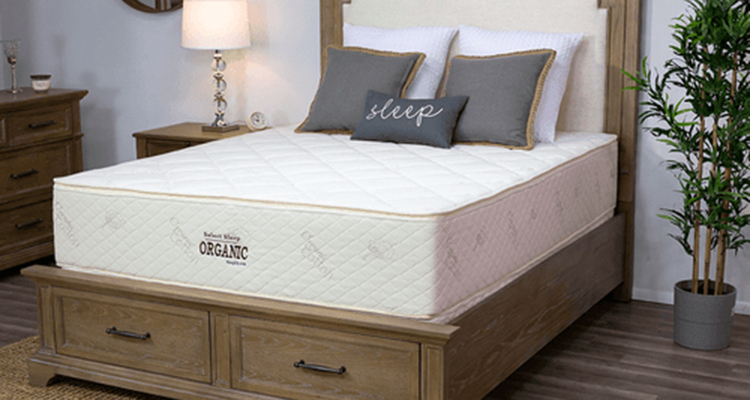Your Complete Guide to Types of Sleep Disorders
You might be surprised to learn that there are a wide variety of sleep disorders which can interfere with our sleep. This guide will take you through the types of sleep disorders an individual can struggle with, and of course provide guidance on what to do if you think you have a sleep disorder.
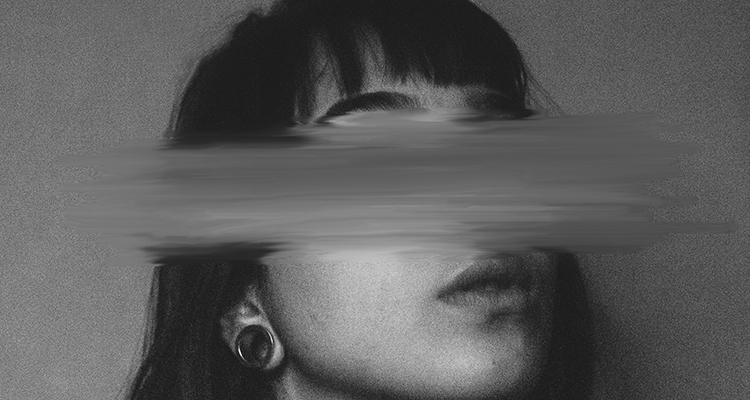
Content
What are sleep disorders?
Sleep disorders are any condition which makes it difficult for you to sleep, or changes the way in which you sleep. Sleep disorders can range in severity depending on the individual, even within one type of disorder. They can also change over time for an individual, either improving or getting worse. Sometimes sleep disorders can change in reaction to external triggers or stimuli.
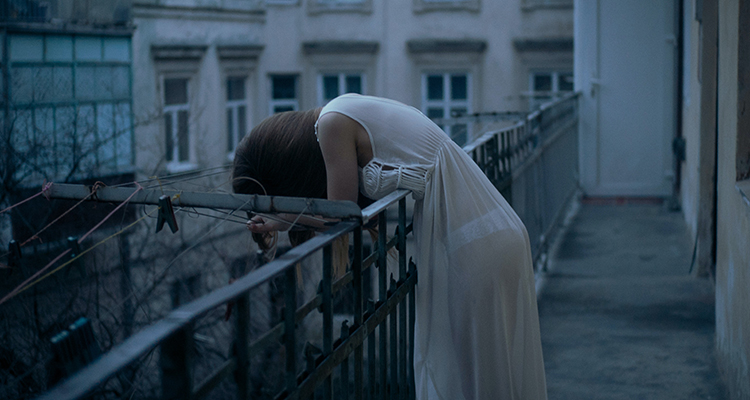
Sleep disorders are actually very common and can affect anyone, of any age. Some types of sleep disorders are more common than others. The National Sleep Foundation states that an estimated 30% of people struggle with sleep disorders of one form or another.
Sleep is vital for us to remain mentally and physically healthy. Sleep enables us to process memories, to regulate bodily processes, to restore and repair tissues and muscles and so much more. This means that any time our sleep is disrupted, it can have a significant effect on our health, our safety and our daily lives.
What happens if your sleep is disrupted?
This study from Sleep Science states that, “Sleep is primarily a biological process that is as essential for survival as the need for food and drink.” So we know sleep is important, but what can really happen if we don’t sleep properly?
Well, in the short term lack of sleep can make it difficult to concentrate, to remember things and to function cognitively. This can be really disruptive to our lives, especially when we’re trying to work or study. If we’re very tired during the day, it can affect our mood and make us less alert. Slower reaction times and fatigue can lead to accidents and threaten our safety.
If we struggle with a sleep disorder and are experiencing lack of sleep over a long period of time, this can have even more consequences. Mental health issues are common, as we need sleep to maintain our mood and keep us feeling positive. The risk of physical health issues are also increased, including cardiovascular issues, weight gain, diabetes, reduced immunity, and even going as far as death in severe cases.
This all sounds really negative and worrying, but don’t panic: sleep disorders can be treated! There are professional treatments combined with self-management strategies which are proven to help you sleep more restfully and to aid us in overcoming sleep disorders.
Understanding the basics of sleep
Before we jump into the range of sleep disorders an individual can struggle with, we need to cover the basics of sleep. How much sleep we need depends on our age primarily, as well as other factors like how active we are during the day and any health conditions we may have.
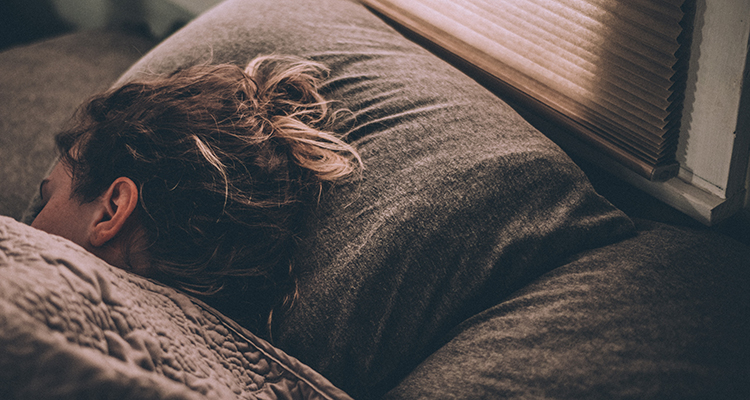
Sleep cycles
Our sleep moves in cycles between two types of sleep: Non-rapid Eye Movement (NREM) and Rapid Eye Movement (REM). NREM sleep is divided into three stages: N1, N2 and N3. Each cycle lasts around 90 minutes, moving down through the stages of NREM sleep into our deepest stage of sleep (N3), then ascending back up towards REM sleep. This means we have multiple cycles of sleep throughout the night, with each stage serving specific functions.
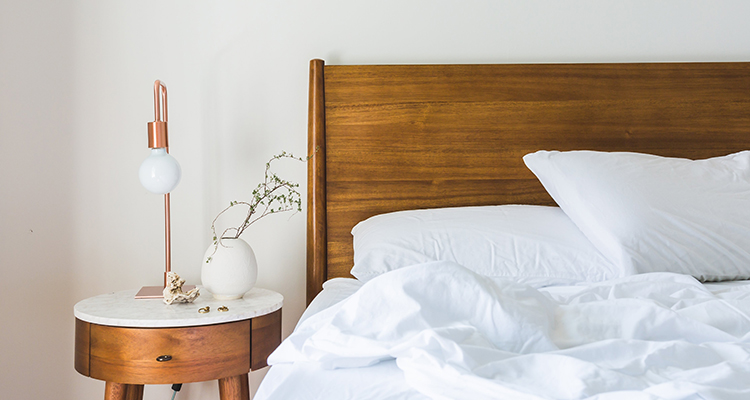
Sleep regulation
Our sleep is regulated by our circadian rhythm, which is like our internal body clock. Our circadian rhythm uses environmental factors like sunlight to ‘tell’ our mind when we should be asleep. A hormone called melatonin is released as we move towards night time, to make us tired and prepare us for sleep. As we sleep throughout the night, levels of melatonin decrease to prepare us for waking up.
Another process called sleep-wake homeostasis works alongside our circadian rhythm to control when we’re awake and when we sleep. A chemical called adenosine is released throughout the day. As it builds up, adenosine makes us increasingly tired as we near our bedtime. Together these processes ensure we get the sleep we need. It’s when they are disrupted regularly that we are experiencing a sleep disorder.
Insomnias
Insomnias are the most common type of sleep disorder. If you have an insomnia disorder, you may struggle to fall asleep, to stay asleep, or both. Onset insomnia refers to being unable to get to sleep when you go to bed. Maintenance insomnia refers to the inability to stay asleep throughout the night, and struggling to get back to sleep once you have woken up. You may also wake up very early in the morning and be unable to get back to sleep.
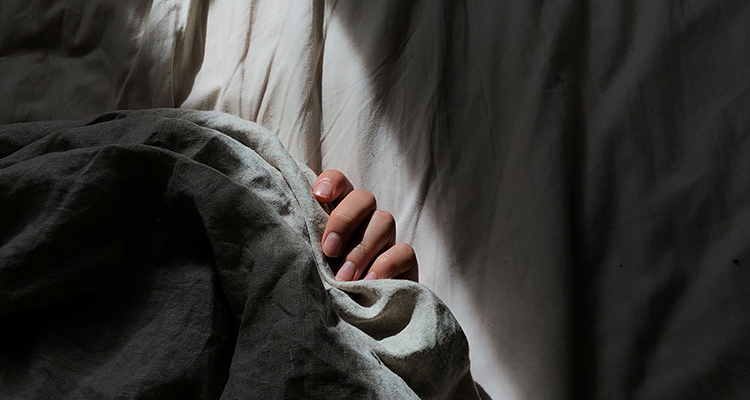
Some factors can increase the chances of an individual struggling with insomnia. Stress in particular can be a significant factor. When we’re stressed, it puts our body in a state of high alert. If this stress is prolonged, we’re stuck in that ‘fight or flight’ state, with our body and mind ready to jump into action. It’s easy to see how this is a hard state to relax and achieve sleep in.
Those who struggle with mental illness may have a lot on their mind which can interrupt their sleep patterns. They may also take medication which can cause insomnia. Likewise, people who struggle with chronic health conditions may find it more difficult to get to sleep, resulting in insomnia. You may hear this referred to as comorbid insomnia, meaning it’s caused or is experienced alongside another health condition.
Since insomnia leads to less sleep than you need, it can have a lot of detrimental effects on an individual’s life. Night time symptoms can lead to an impact on your functioning during the day. The severity of these effects will depend on the individual. You may struggle to concentrate on a task; find that you’re irritable or more emotional; experience low mood; struggle with memory; find it hard to make decisions and more. Insomnia can also increase your risk of having physical health conditions.
Although insomnias can be tough to live with, there are treatments which can help. Treatments include psychological therapy such as cognitive behavioural therapy for insomnia (CBT-I), relaxation techniques like mindfulness, and effective self management among other options. You may hear the term sleep hygiene, which refers to positive habits and a routine which helps to improve your chances of sleeping and your quality of sleep.
You might be surprised to know that there’s more than one sleep disorder classed as an insomnia. Let’s take a look at the types of insomnia which can affect an individual.
Insomnia
If you struggle with insomnia, you will find it difficult to get to sleep or to stay asleep, despite there being no external ‘reason’ for this lack of sleep. This report provided by the American Academy of Sleep Medicine explains that insomnia affects between 30-35% of adults and is more common in, “older adults, women, people under stress and people with certain medical and mental health problems such as depression.”

- Short term: Lasting up three months.
- Chronic: Lasting for at least three months, often longer.
Insomnia in children
Children can struggle with insomnia too! Children have different sleep requirements than adults, as explained by this article: “children between the ages of 6 and 12 need about 10 to 11 hours of sleep each night, and teens need about 9 hours of sleep each night.”

Insomnia in children tends to happen as a result of having no consistent bedtime set by their parents. Without a set bedtime, children may stay awake as long as they can and struggle to get to sleep when they do go to bed. They may also frequently get up to ask for attention, a snack, or drinks of water for example, to try to stay awake.
Other health issues can also cause children to struggle with sleep including anxiety; another sleep disorder; mental illness; stress; physical health conditions and neurodevelopmental disorders (such as autism).
Thankfully insomnia in children can usually be tackled by parents being firm and consistent in a set bedtime, so the child’s body clock can reset itself. Children whose insomnia stems from other causes can receive effective treatment, just like adults, to help them get the sleep they need.
Short sleeper syndrome (SSS)
Someone who is a ‘short sleeper’ will need less than the typical seven to nine hours of sleep an adult usually needs. Unlike other forms of insomnia, they are unlikely to struggle to get to sleep, and will have a restful sleep which is undisturbed. Short sleepers don’t feel the consequences of lack of sleep during the day. They are able to function normally on a reduced amount of sleep. This report explains that short sleepers, “regularly feel alert and refreshed after sleeping less than 6 hours per night. Short sleepers function normally during the day despite their short sleep duration.”
Since those with short sleeper syndrome don’t experience adverse effects, treatment may not be required. However treatment can be sought and self-management strategies used to increase the length of time sleeping if desired.
Hypersomnias
Hypersomnias are sleep disorders which cause the individual to be extremely tired. This might cause them to fall asleep at inconvenient times which is out of their control. This can understandably be dangerous, as it could happen when they are driving or walking for example.
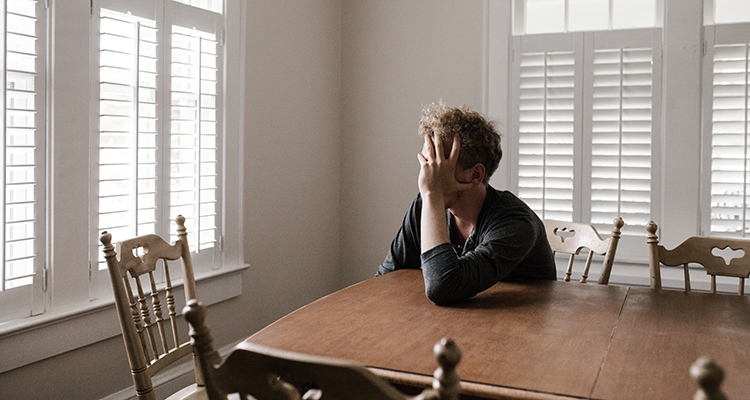
Since hypersomnias interrupt restful sleep, individuals can struggle with tiredness and the associated effects during the day. It’s estimated that around 40% of people experience hypersomnias at some point in their life.
Hypersomnias can be caused by other sleep disorders; other health issues; mental illness; genetics and some medications. Depending on the hypersomnia you suffer from, treatment can vary. Potential treatments include treating the root cause (if it’s known); medication; psychological treatments; and improving sleep hygiene.
There are a few types of hypersomnia you can be diagnosed with, some of which are more common, while others are very rare.
Narcolepsy
Narcolepsy is the most well known hypersomnia, and perhaps one you will have heard of even if you don’t suffer with it! It’s a lifelong disorder, meaning it can be managed but cannot be cured.The disorder makes the individual uncontrollably, extremely tired. However not all narcolepsy cases involve the well known episodes when the individual falls asleep on the spot and is unable to control their body: this only happens in severe cases.
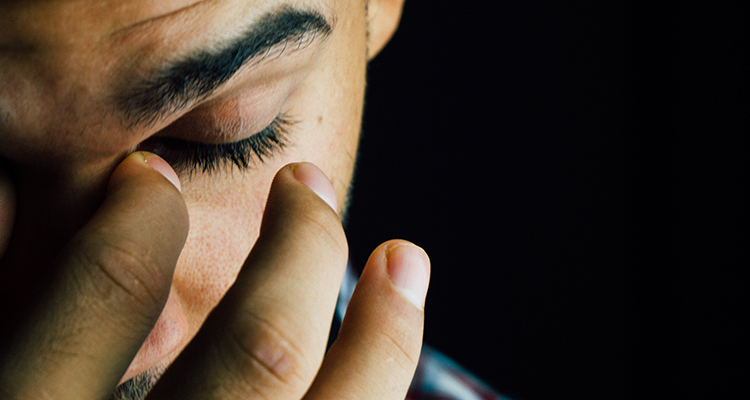
There are two types of narcolepsy:
- Type 1: This type of narcolepsy involves severe daytime tiredness and involves either cataplexy or low CSF hypocretin-1 levels; in some cases it will involve both. Cataplexy refers to attacks of narcolepsy which involve loss of muscle tone and control. This article explains that it can cause, “slurred speech and buckling knees, or in more severe cases complete paralysis.”
Hypocretins are neurotransmitters (meaning chemicals within the brain) which help to control our awake and alert state, preventing sleep at the wrong times. Research shows that the neurons which produce hypocretins are lacking in the brains of those with narcolepsy.
- Type 2: The second type of narcolepsy includes the extreme tiredness during the day, but doesn’t involve cataplexy.
Idiopathic hypersomnia (IH)
The Hypersomnia Foundation explains that Idiopathic hypersomnia (IH) “is a chronic neurological disorder marked by an insatiable need to sleep that is not eased by a full night’s slumber.” ‘Chronic’ means that the disorder lasts 3 months or more.
Someone who is struggling with IH will typically sleep for long periods of time and take naps during the day, but won’t feel any less tired (you might hear this referred to as non-restorative sleep).They may struggle to wake up after sleep, and will suffer with the effects of ‘lack of sleep’ when they’re awake, even though they’ve slept!
Kleine-Levin syndrome (KLS)
The Kleine-Levin Syndrome Foundation explains that KLS is, “a rare and complex neurological disorder characterized by recurring periods of excessive amounts of sleep, altered behavior, and a reduced understanding of the world.”
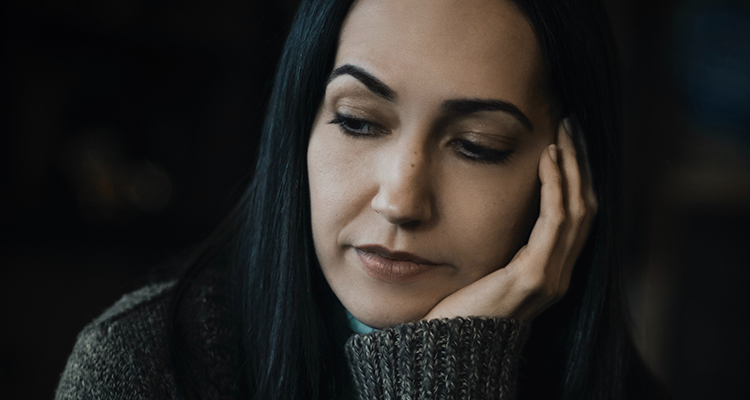
The cause of KLS is not known. Symptoms of KLS come in cycles. When they’re not having an episode, someone with KLS can function normally. When an episode occurs it can last for weeks or months. During an episode patients may sleep for most of the day and night. They are unable to care for themselves or function.
When the individual is awake during an episode, they will struggle to function cognitively: they may display no emotions, seem ‘spaced out’, and be very confused, among other symptoms. This article from the National Insitiutes of Health explains that during an episode the individual, “can also display abnormal behavior, such as excessive food intake (hyperphagia), irritability, childishness, disorientation, hallucinations, and an abnormally uninhibited sex drive.”
Long sleeper
Long sleepers need more sleep than is average for their age, and will regularly sleep for very long hours (often between 10 and 12 hours). Their sleep is typically restful and they will feel rested and function well throughout the day. However if they are not able to get the long sleep they need due to the responsibilities life brings, they will feel tired and struggle with the associated effects of not having enough sleep.
Around 2% of the population are estimated to be long sleepers. A definitive is not known although research is ongoing. The American Sleep Association explains that long sleepers shouldn’t try to ‘fight’ the disorder and instead should, “try to live within its constraints as well as they can.”
Insufficient sleep syndrome
You might also hear this referred to as behaviourally induced insufficient sleep syndrome. It’s named this because the disorder involves people choosing other activities over sleep, leading them to struggle with the effects of lack of sleep during the day. This report explains that insufficient sleep syndrome is, “voluntary, but unintentional. You are normally unaware that you need more sleep than you are getting.” This can stem from mental health issues, stress, or long hours at work for example.
Parasomnias
Parasomnias can be defined as, “sleep disorders characterized by abnormal, unpleasant motor verbal or behavioral events that occur during sleep or wake to sleep transitions.” These behavioural events happen while the individual is still asleep and unaware of their behaviour, even if it appears otherwise. Most people won’t remember what happened during a parasomnia.
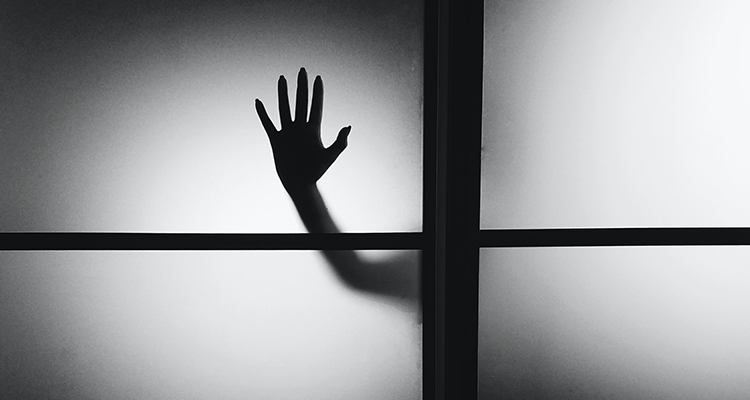
Parasomnias can be worrisome or dangerous depending on the person’s environment. They disrupt restful sleep, and therefore they can cause you to experience the effects of tiredness during the day.
There are lots of possible causes for parasomnias including stress, mental illness, other health issues, substance use and certain medications. Treatments typically involve medication and psychological therapies, cognitive behavioural therapy for insomnia (CBT-I) being the primary therapy used. Improved sleep hygiene can be beneficial, along with making the environment safer for the individual to minimize dangers which may occur while they’re experiencing symptoms.
There are a wide range of parasomnias an individual can suffer from which can vary in severity. An individual may suffer from more than one parasomnia.
Night terrors
One of the more common types of parasomnia you may have heard of is night terrors or sleep terrors. The person will act as though they are in terror, often sitting up, screaming or crying out, and moving around in a distressed manner. This can last for a few moments, and can be very disturbing to watch. An adult might remember a nightmare which accompanied the night terror they experienced.
Sleepwalking
Sleepwalking is another well known parasomnia. It used to be known as somnambulism. This happens during the deeper stages of sleep and, as it sounds, often results in the individual walking around or carrying out other behaviours while they’re still asleep. The National Sleep Foundation explains that symptoms can vary, “from simply sitting up in bed and looking around, to walking around the room or house, to leaving the house and even driving long distances.”
This can understandably be quite dangerous, as well as distressing for loved ones. It’s important to note that despite common misconceptions, it’s safer to wake a sleepwalker to ensure they don’t hurt themselves. Most people will not remember their sleepwalking incident the next day.
Confusional arousals
Those who display confusional arousals are confused and disorientated as they wake up, or just after waking up. They may feel as though they are thinking through a fog, causing slow or slurred speech, confused thinking, problems with memory and generally out of character behaviour. The episodes can last from a few moments to a few hours after they wake up.
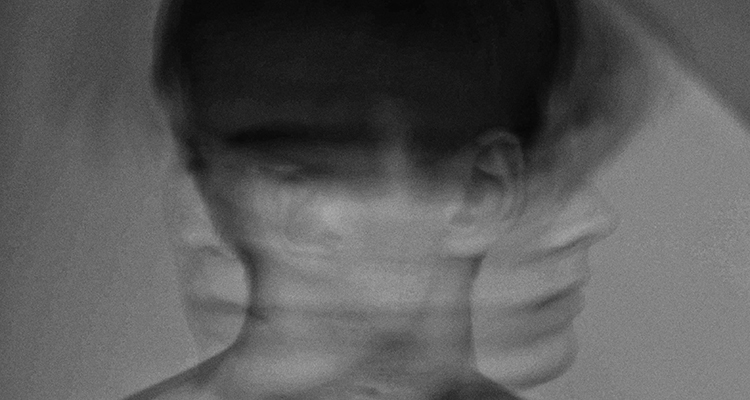
Sleep related eating disorder (SRED)
SRED can be defined as, “repeated episodes of compulsive binge eating and drinking after waking up in the night.” How alert the individual is during these episodes and how much they remember afterwards can vary. This can happen even when the person is not hungry or thirsty, essentially without any ‘reason’ for the behaviour.
Episodes can happen multiple times a night. This can be dangerous as you are not thinking clearly when you’re in this state of sleep, and can eat foods which aren’t well prepared, or burn yourself trying to cook foods. You could cut yourself while preparing food, or leave a cooking appliance turned on after you return to bed. You could even eat things which are inedible. This can be very worrying for loved ones as well as the individual, and can be embarrassing and distressing.
REM sleep behaviour disorder (RBD)
We do most of our dreaming in the REM stage of sleep. When most of us are in the REM state of sleep, our brain temporarily paralyzes our muscles so that we don’t act out our dreams and hurt ourselves. However for those with RBD, this paralysis doesn’t take place, so they’re able to act out their dreams. This can result in them kicking out, moving around, talking in their sleep and even getting up from their bed. If it’s severe, this can be dangerous for themselves and their partner if they share a bed.
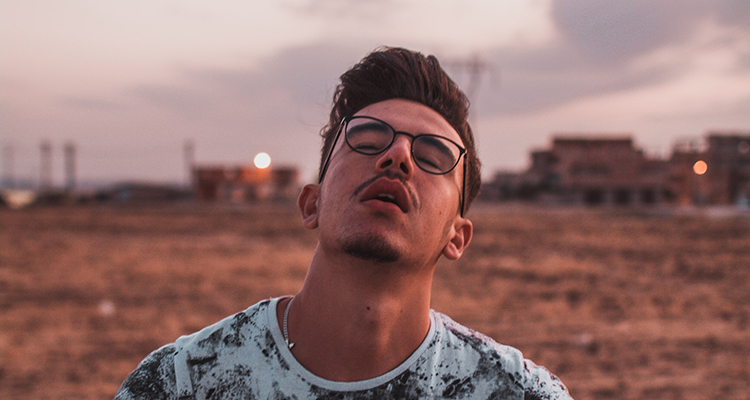
Sleep paralysis
Sleep paralysis refers to being unable to move or speak as you are waking up or falling asleep. Your other senses are working, so you can see and hear what is happening around you, but are unable to respond to it. Understandably this can be extremely frightening. It’s not dangerous, although it can feel like it at the time.
Hypnagogic experiences can also happen during sleep paralysis, which are hallucinations. This can make the experience more frightening as people may feel they are falling, being choked, being pinned down or think there is an intruder in the room, among many other potential hallucinations.
Similarly to RBD, sleep paralysis occurs during the REM stage of sleep, stemming from an issue with the muscle paralysis which is usually helpful in preventing us acting out our dreams. In individuals with sleep paralysis, this paralysis continues even after they’ve woken up. For most people, they may experience it only once or twice in their lifetime. For some people however, they may experience it more regularly.
Frequent nightmares
Almost all of us have had a nightmare in our life: they’re bad dreams which can feel very vivid and leave a sense of unease once we’ve woken. They happen in the REM stage when most of our dreaming takes place. This is normal, especially when we have something on our mind. However, when nightmares become a frequent occurrence and are affecting our quality of sleep, they can be considered a sleep disorder.
Bedwetting
The medical term for bedwetting is nocturnal enuresis. In young children, bedwetting is part of the learning process as they gain control over their body and learn to use the toilet properly. However if bedwetting happens after the age of seven, it can be considered a problem. Bedwetting can happen in adults, although this is usually coming from another underlying health issue.
Sleep related hallucinations
Sleep related hallucinations can occur either when you are falling asleep (known as a hypnagogic hallucination) or as you are waking up (known as a hypnopompic hallucination). They involve an imagined event which can involve any of the senses, although visual hallucinations are most common. Sleep related hallucinations are quite common with up to an estimated 70% of us experiencing them at some point in our life.
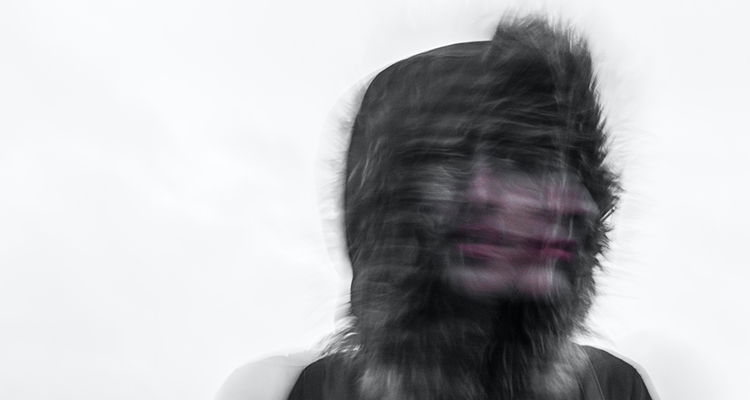
Sleep talking
Just as it sounds, sleep talking is simply talking in your sleep. This can involve full conversations with others who are awake, mumbling, making noises, and even laughing! Sleep talking is medically known as somniloquy. Most people won’t be aware they talk in their sleep unless someone points it out. It’s not harmful and tends not to disturb the quality of sleep, although it can be embarrassing for some.
Exploding head syndrome
The name for this syndrome sounds really dangerous, but in fact it’s physically harmless. It refers to a loud noise you imagine hearing just as you’re about to fall asleep or when you wake up in the night, as with the sleep related hallucinations we mentioned earlier. It can be startling and very frightening, as well as being very disruptive to sleep. The noise is usually a loud bang, and can be accompanied by a flash of light.
Sleep related breathing disorders
This detailed article from the European Respiratory Society explains that sleep related breathing disorders or, “‘sleep disordered breathing’ encompasses a range of conditions characterised by abnormal breathing during sleep; in many cases this is associated with narrowing or obstruction of the upper airway (pharynx).”
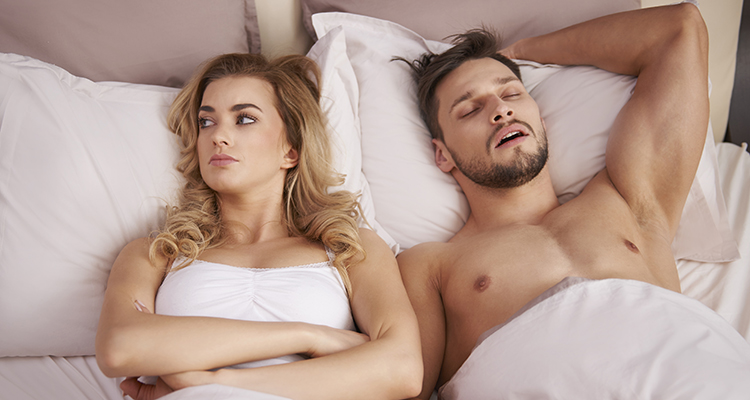
This obstruction can be partial, which can lead to snoring, or more severe which can lead to significant breath difficulties. The causes of sleep related breathing disorders vary depending on the type, as do the treatments. Having a form of sleep related breathing disorder is very common, more so than you might think.
Snoring
Snoring is a loud noise which occurs when you breathe during sleep. As you go to sleep, the muscles in your throat relax, just like in other areas of your body. When you breathe, the walls of your throat vibrate. If your airway becomes narrow, this vibration can produce the sound we know as snoring.
While this isn’t dangerous, it can disturb your sleep and that of loved ones. Snoring can be treated with improved sleep hygiene, psychological therapies to promote a better quality of sleep, and other measures such as lying on your side.
Obstructive sleep apnea
Obstructive sleep apnea is fairly common and is serious because it stops you breathing while you’re asleep. Sometimes the muscles in the throat relax too much during sleep, causing your tongue to fall backwards and narrowing your airway. When the airway becomes blocked, it prevents oxygen from reaching your brain. This might cause you to make noises as you try to catch your breath, and will cause you to wake up. This report explains that this can happen, “a few times a night, or in more severe cases, several hundred times a night.”
The consequences of sleep apnea come in two ways: the disurbed sleep leaves you tired and battling the results of lack of sleep during the day, and the lack of oxygen can have long term consequences on your health. Thankfully there are a number of treatment options for obstructive sleep apnea from sleep hygiene and lying on your side, to more in depth treatments including:
- CPAP (Continuous Positive Airway Pressure): This is a machine attached to a mask which you wear over your nose and mouth at night. The machine sends out a steady flow of air which helps to keep your airway open.
- Oral Appliance Therapy: This is a device which fits over your teeth and keeps your tongue and jaw in position, to prevent the airway collapsing as you sleep.
- Surgery: In some cases surgery will be done to remove any extra tissue in the throat which is causing the blockage.
Central sleep apnea
Rather than a blockage in the airway as with obstructive sleep apnea, central sleep apnea occurs as a result of a problem with the heart or brain. Breathing is not regulated properly during sleep, causing breathing to decrease or even stop in a cycle during the night.
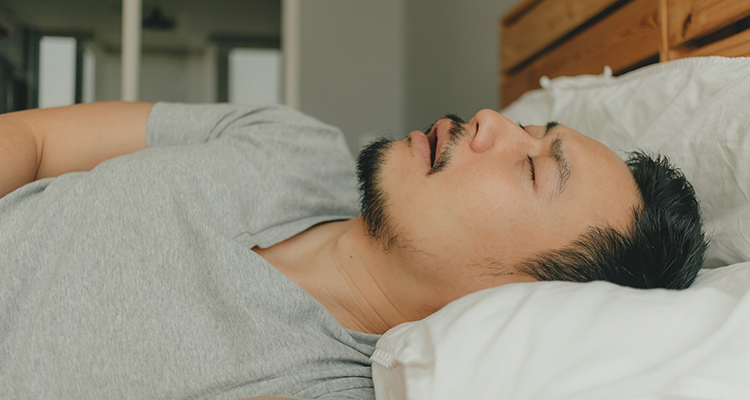
Child sleep apnea
Children of any age can also suffer from sleep apnea. Causes and types of sleep apnea may vary, as will the treatments. However sleep apnea can be treated and managed to ensure the child is able to live a happy, healthy life.
Catathrenia
Catathrenia is also called sleep related groaning, and as it sounds is simply a groaning noise made during sleep. If you have sleep related groaning, you will likely be unaware, however it can be disturbing for your partner.
Sleep related movement disorders (SRMDs)
This book the Encyclopedia of Sleep explains that SRMDs, “comprise a spectrum of conditions that involve simple, usually stereotyped movements that can cause disruption of nocturnal sleep and may thus lead to daytime sleepiness and fatigue.” Aside from the ramifications of disturbed sleep, these movements can also be dangerous if severe, and can be quite distressing.
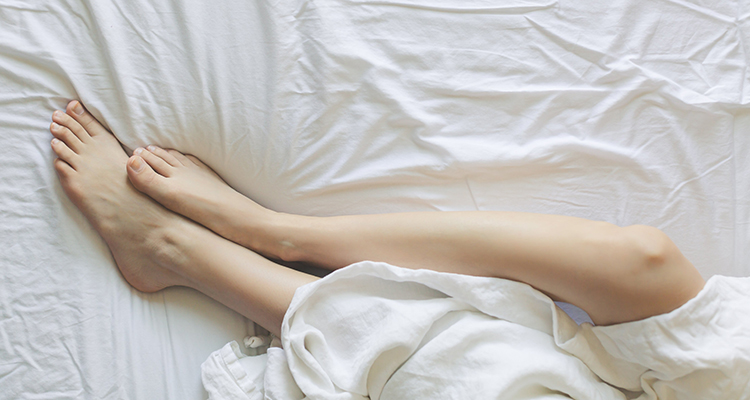
Causes, and therefore treatments, vary depending on the type of SRMD experienced. There are a number of SRMDs which may be experienced, and one individual may have more than one type of SRMD.
Restless leg syndrome
Restless leg syndrome is a neurological disorder which makes it very hard to keep your legs still. You may feel that there is burning, tingling or a general sense of uncomfortableness coming from within your legs, and that you have to move them. This can of course make it really difficult to get to sleep. Restless leg syndrome can also affect people during the day, making it tough for them to sit still or focus. The severity can vary from person to person, along with how much it affects your sleep.
Causes of restless leg syndrome can vary from low iron levels and other health issues to side effects of specific medications and mental illness. Treatment can involve medication, therapy for stress reduction, and self management techniques.
Sleep leg cramps
You may hear this referred to as nocturnal leg cramps. Almost all of us will have experienced the feeling of a cramp in our life: the muscles contract and tighten, producing pain and often making you cry out. When these cramps happen regularly at night, it becomes a sleep disorder because it prevents the individual from getting to sleep, and often wakes them up from their sleep.
The disorder can be quite common, although some people might only experience it once or twice a year, while others may have cramps several times each night. Experts aren’t sure of a definitive cause of sleep leg cramps, but there are lots of emerging theories. Likewise, treatments are still in development, but exercise and therapies revolving around relaxation and stress reduction are thought to be useful.
Periodic Limb Movement Disorder (PLMD)
PLMD causes you to have uncontrollable, repetitive muscle movements which interfere with your sleep. They usually involve the lower legs primarily. Each episode can last for as long as an hour, with movements happening every 20 to 40 seconds.
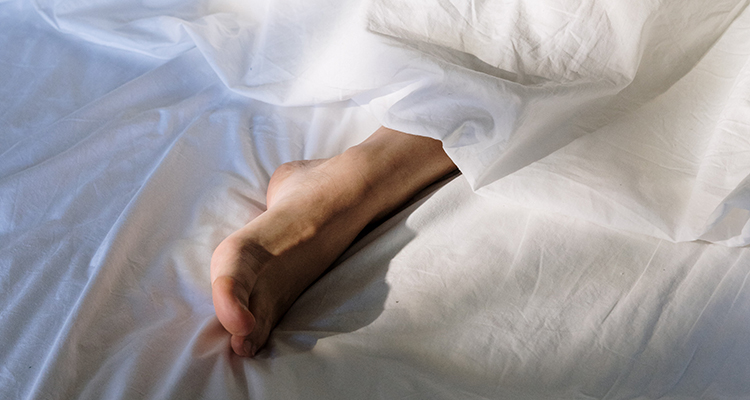
In mild cases, you won’t be aware of the movements and they won’t wake you up. However in more severe cases, the movements will disrupt your sleep. This article explains that, “Periodic leg movements occur during the non-REM phase of sleep, are associated with arousal, and may compromise sleep quality, which can cause poor performance during the day.” Treatment for PLMD can include medications and stress reduction.
Sleep rhythmic movement disorder (RMD)
RMD involves repetitive body movements in the early stages of sleep, most commonly seen in children. This study from the Journal of Clinical Sleep Medicine explains that RMD causes, “repetitive, stereotyped, and rhythmic motor behaviors occurring predominantly during drowsiness or stage N1 sleep, involving large muscle groups, with possible significant consequences such as sleep disruption and injuries.”
The movements can be accompanied by sounds such as humming or moaning. Movements can vary depending on the individual, but typically entail:
- Rocking the body back and forth
- Banging the head against the bed, wall or any nearby surface
- Head rolling
- Body rolling
- Leg banging or rolling
An episode can last around 10 to 15 minutes. Causes can include medication side effects, mental illness, other health issues and another sleep disorder. RMD can be distressing to see and hear, especially for parents when the disorder is displayed in young children, but treatments are available and many children grow out of this disorder. Treatments typically revolve around medication, making the surroundings safer and relaxation techniques.
Sleep bruxism
Sleep bruxism is a disorder causing you to grind your teeth or clench your jaw while you’re asleep. If sleep bruxism is mild, you may not notice and it may not cause any problems. However if it’s severe it can lead to health issues and disturbed sleep. Mayo clinic explains that severe sleep bruxism can lead to, “jaw disorders, headaches, damaged teeth and other problems.”
The cause isn’t fully understood but it’s thought that factors such as stress, genetics and other health issues can contribute to the disorder. Treatment depends on the severity of the problem and can include relaxation techniques, psychological therapies, and devices like mouth guards to prevent damage to the teeth.
Circadian rhythm disorders
As we mentioned earlier, our circadian rhythm is like an internal, 24 hour clock which controls when we’re awake and when we go to sleep among other functions. Outside factors, like the amount of light we see, help to regulate our circadian rhythm. When this internal clock is not running properly, it leads to problems in the regulation of sleep. This can lead to problems getting to sleep, staying asleep, waking up too early, or having non-restorative sleep, which means you don’t feel the benefit of sleeping.
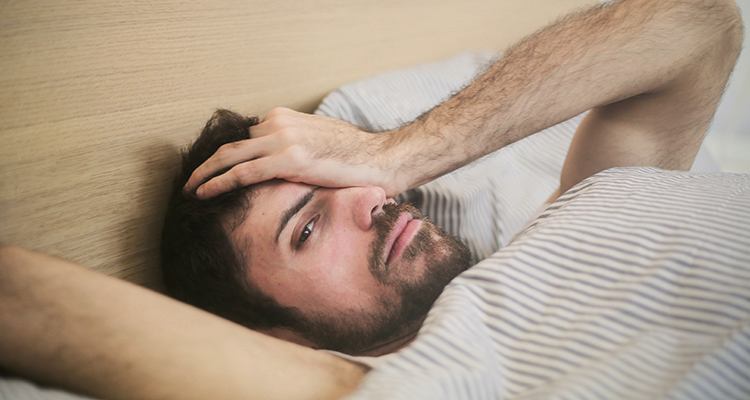
The causes of circadian rhythm disorders can stem from poor sleep hygiene, health issues, blindness, prolonged exposure to light, shift work, medication and more. This article from Cleveland Clinic explains that, “The disruption results from either a malfunction in your “internal body clock” or a mismatch between your “internal body clock” and the external environment (for example, social and work requirements), which affects the timing and duration of sleep.”
Treatments center around improved sleep hygiene and lifestyle changes, psychological therapies such as CBT-I and mindfulness, medications and bright light therapy. Bright light therapy uses artificial light to try to reset the circadian rhythm.
Delayed sleep-wake phase disorder (DSP)
DSP entails a person regularly going to sleep and waking up two hours later than ‘average’. They may stay up very late into the early hours of the morning, and get up much later than considered normal. When they are asleep, the sleep tends to be of a good quality and provided they are able to get up later, they won’t experience the effects of lack of sleep during the day.
However life commitments often mean we have to get up at a specific time, which can lead to a person with DSP not getting the amount of sleep they need. DSP is most commonly seen in young adults and teengers, with the American Academy of Sleep Medicine reporting a prevalence of 7-16% in this age group.
Advanced sleep-wake phase disorder (ASP)
ASP is almost like the opposite of DSP, causing the individual to go to bed several hours earlier than the average, and likewise get up several hours earlier than considered normal. They may go to bed as early as 6pm, and get up as early as 2am. Like DSP, if they are able to get the full amount of sleep they need and work their life around their sleeping hours, they won’t feel any negative effects. However if there are commitments which mean they can’t go to bed as early as they need to, they will experience the effects of lack of sleep.
Irregular sleep-wake rhythm
Those with an irregular sleep-wake rhythm have an undefined sleeping pattern. This means that when they sleep varies. They typically sleep in short bursts, taking naps throughout the day and night, rather than for any significant length of time. Even if the total amount of time sleeping meets the average sleep time needed for their age, the disturbed sleep causes marked problems. The National Institutes of Health states that this disorder is very rare, and is caused by a neurological problem
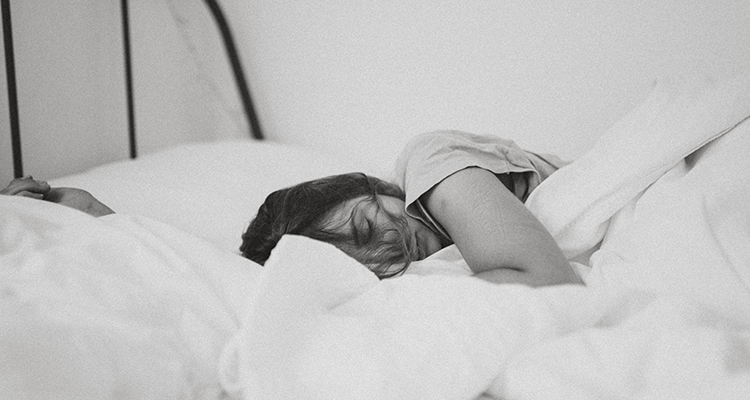
Non 24 hour sleep-wake disorder
You might also hear this shortened to Non-24 or N24, or referred to as hypernychthemeral syndrome or free-running disorder: all these names can be confusing, but they’re all referring to the same thing. The National Sleep Foundation explains that those with Non-24, “have circadian rhythms that are not synchronized with the 24-hour day-night cycle, either through a failure of light to reach the SCN, as in total blindness, or due to various other reasons in sighted people.”
Instead of sleeping at roughly the same time each day and night, those with Non-24 will go to sleep gradually later and later each day. They will work their way all the way around the clock over the coming days and weeks until eventually they’re back to the time when they first fell asleep. The cycle will then continue on. Non-24 occurs in 55-70% of blind people.
Shift work sleep disorder
Those who work in shifts will understandably find that their circadian rhythm is disrupted. Shift patterns can vary and rotate, including early morning shifts and night shifts. This can confuse our internal clock and make it difficult to get the amount of sleep we need.
Shift workers may experience trouble sleeping during the day if they are on night shift for example, because our body clock is regulated to stay awake when it’s light outside. They may find that they are sleeping longer hours when they’re not working to try to catch up on sleep. Some shift workers experience microsleeps, meaning they fall asleep for a few seconds and wake up again quickly when they’re at work.
Jet lag
You will no doubt have heard of jet lag. When we travel fairly quickly into another time zone, it disrupts our circadian rhythm. We may be trying to sleep at a time when we would usually be wide awake at home, and visa versa. Thankfully this is temporary and doesn’t usually require treatment.
What to do if you think you have a sleep disorder
Now we’ve covered the range of possible sleep disorders, it’s time to take a look at what you can do if you think you have symptoms of a sleep disorder.

Keep note of your symptoms
One of the first things you should do is keep note of your symptoms. Writing down when and what you’re experiencing can allow you (and your doctor) to get a clearer view of any patterns, and of how your potential disorder may be affecting your life. You could note this down in a journal, on a piece of paper, on your phone or on your computer.
Talk to your doctor
The next vital step to take is seeing your doctor: your GP will be your first point of call. Talk to them about the symptoms you’ve been experiencing, and ask any questions you may have. If they feel you have a common sleep disorder and your symptoms are mild, they may recommend medication, advise you on self-management techniques you can use or refer you for therapy. If your symptoms are more severe, you may be referred to a sleep specialist.
Seeing a sleep specialist
An appointment for a sleep specialist will usually occur in a clinic setting. They will initially talk to you about the symptoms you’re experiencing and look over any notes you’ve made. If they feel it’s necessary, they may carry out a sleep study. You might hear this referred to as a polysomnography.
A sleep study involves you staying at the clinic overnight, sometimes for a couple of nights, so that they can monitor you and see how your disorder affects you. You will usually have an electroencephalogram (EEG), which simply means you’ll have small sensors attached to your scalp, which are then attached to a machine which monitors your brainwaves.This is non-invasive, not painful and isn’t anything to worry about.
The test helps the doctors to see what’s happening in your brain when you sleep, so that they are able to give you an accurate diagnosis. Once you have a diagnosis, they will be able to advise you on treatments and ways in which you can manage your symptoms to improve your quality of sleep.
Receiving treatment
There are a range of treatments which may be offered by a doctor depending on the sleep disorder you have. You may discuss medications or be referred to a psychological therapy to help you reduce your symptoms. You may also be able to self-refer for therapy depending on where you live. Often these referrals involve being on a waiting list, so it can take time to see a therapist.
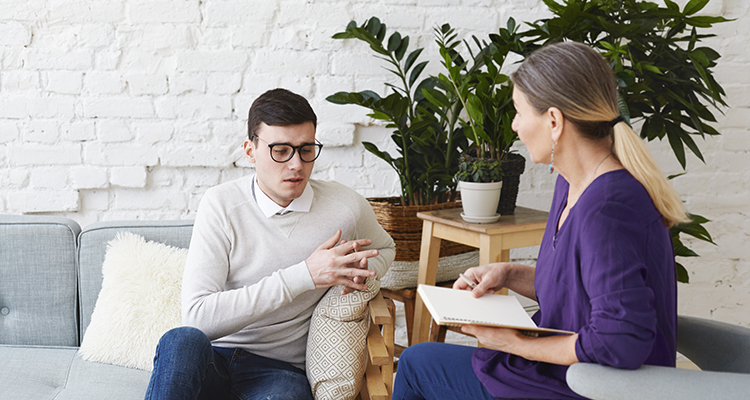
Whatever path you choose, it’s important to reach out for help if you’re struggling so that you can begin to sleep more peacefully and overcome your symptoms. Two of the primary therapies recommended for sleep disorders are:
- Cognitive behavioural therapy for insomnia (CBT-I) The National Institutes of Health recommends CBT-I as the primary treatment for most sleep disorders. CBT-I uses CBT techniques to help patients change negative sleeping habits and implement more positive, helpful behaviours and thought processes to ultimately help them to sleep properly.CBT-I typically entails a number of techniques including relaxation; sleep education; sleep restriction therapy (setting specific times that you will be in bed to regulate your body clock); and stimulus control (controlling the type of stimulus which might be preventing restful sleep). These techniques equip you with the tools to continue having a restful sleep for the long term.
- Mindfulness Mindfulness techniques focus on being present in the moment, promoting complete body and mind relaxation. Meditation and guided visualization in particular can be extremely useful to help those with sleep disorders reduce stress and relax enough to have a restful sleep. Guided meditations can be listened to in bed to help you drift off to sleep.There are a vast body of studies showing just how effective mindfulness can be in treating sleep disorders and providing better sleep quality, even in those who usually sleep well. Mindfulness is even proven to help those with other health conditions get a better sleep, such as those with chronic pain.
Sleep hygiene
There are plenty of ways you can help yourself to improve your sleep: this is often referred to as sleep hygiene. Good sleep hygiene is pivotal when trying to combat sleep disorders. The National Sleep Foundation defines sleep hygiene as, “a variety of different practices and habits that are necessary to have good nighttime sleep quality and full daytime alertness.”

- A regular bedtime: Going to bed and getting up at the same time each day consistently can help to reset your body clock over time.
- Limiting naps: Naps can reduce the need for sleep at night, so reducing them can help you to sleep more peacefully. If you do nap, keep them short (under 30 minutes) to feel the benefits without disturbing your sleep.
- Exercise: Doing exercise can help to tire out your body and mind ready for sleep. Intense exercise shouldn’t be done close to your bedtime however, as this can make you feel more awake.
- Avoid stimulants: As you get closer to bedtime, avoid stimulants which may keep you awake, such as caffeine, nicotine and alcohol.
- Make your bedroom comfortable: Ensure your bedroom is peaceful and as comfortable as possible to encourage sleep.
- Wind down before bed: Take some time to relax and wind down before bed, whether this means listening to an audio book, practicing mindfulness, taking a bath or reading for example.
As worrisome and disruptive sleep disorders can be, remember that there are treatments which can help you get the sleep you need. Even if you don’t have a diagnosed sleep disorder but are struggling with your sleeping pattern, you can seek help. You don’t have to struggle alone. You can sleep peacefully again!
References
National Sleep Foundation, (2020), “What are the Facts About Insomnia?”
Chattu, V. K., Sakhamuri, S. M., Kumar, R., Spence, D. W., BaHammam, A. S., & Pandi-Perumal, S. R. (2018). “Insufficient Sleep Syndrome: Is it time to classify it as a major noncommunicable disease?” Sleep science (Sao Paulo, Brazil), 11(2), 56–64.
Division of Sleep Medicine, (2020), “Consequences of Insufficient Sleep”. Harvard Medical School.
Krista O’Connell, (2018), “Effects of Insomnia On the Body”. Healthline.
American Academy of Sleep Medicine, (2020), “Insomnia – Overview and Facts”.
Vincent Iannelli, MD, (2020), “Childhood Insomnia Causes and Treatment”. Very Well Family.
American Academy of Sleep Medicine, (2020), “Short Sleeper – Overview”.
Web MD, (2020), “Sleep and Hypersomnia”.
American Academy of Sleep Medicine, (2020), “Narcolepsy – Overview and Facts”.
Division of Sleep Medicine, (2018), “The Science of Narcolepsy”. Harvard Medical School.
Hypersomnia Foundation, (2020), “About Idiopathic Hypersomnia”.
Kleine-Levin Syndrome Foundation, (2020), “WHAT IS KLS?”
Genetic and Rare Diseases Information Center (GARD) , (2017), “Kleine Levin Syndrome”. National Institutes of Health.
American Sleep Association, (2020), “Long sleeping”.
American Academy of Sleep Medicine, (2020), “Insufficient Sleep Syndrome – Overview & Facts”.
Singh, S., Kaur, H., Singh, S., & Khawaja, I. (2018). “Parasomnias: A Comprehensive Review.” Cureus, 10(12), e3807.
National Sleep Foundation, (2020), “Sleepwalking”.
American Academy of Sleep Medicine, (2020), “Sleep Eating Disorder – Overview & Facts”.
NHS, (2019), “Sleep paralysis”.
National Sleep Foundation, (2010), “Bedwetting and Sleep”.
Brandon Peters, MD, (2019), “What You Should Know About Sleep-Related Hallucinations”. Very Well Health.
European Respiratory Society, (2020), “Sleep breathing disorders”.
American Academy of Sleep Medicine, (2020), “Sleep Apnea – Overview & Facts”.
Clete A. Kushida, (2013), “Encyclopedia of Sleep”. Elsevier Inc
American Academy of Sleep Medicine, (2020), “Periodic Limb Movements – Overview & Facts”.
Nicola Davies, PhD, (2019), “Exploring Sleep-Related Movement Disorders”. Neurology Advisor.
Chiaro, G., Maestri, M., Riccardi, S., Haba-Rubio, J., Miano, S., Bassetti, C. L., Heinzer, R. C., & Manconi, M. (2017). “Sleep-Related Rhythmic Movement Disorder and Obstructive Sleep Apnea in Five Adult Patients.” Journal of clinical sleep medicine : JCSM : official publication of the American Academy of Sleep Medicine, 13(10), 1213–1217
Mayo Clinic, (2017), “Bruxism (teeth grinding)”.
Cleveland Clinic, (2020), “Circadian Rhythm Sleep Disorders”.
American Academy of Sleep Medicine, (2008), “Circadian Rhythm Sleep Disorders”.
U.S. National Library of Medicine, (2020), “Irregular sleep-wake syndrome”. National Institutes of Health.
National Sleep Foundation, (2020), “Non-24-Hour Sleep Wake Disorder”.
National Organization for Rare Disorders, (2020), “Non-24-Hour Sleep-Wake Disorder”.
National Heart, Lung, and Blood Institute (NHLBI), (2020), “Insomnia”. National Institutes of Health.
Black, D. S., O’Reilly, G. A., Olmstead, R., Breen, E. C., & Irwin, M. R. (2015). “Mindfulness meditation and improvement in sleep quality and daytime impairment among older adults with sleep disturbances: a randomized clinical trial.” JAMA internal medicine, 175(4), 494–501.
Michelle Park Yuan Zhang Lori Lyn Price Raveendhara R. Bannuru Chenchen Wang, (2019), “Mindfulness is associated with sleep quality among patients with fibromyalgia”. International Journal of Rheumatic Diseases, Volume 23, Issue 3, March 2020, Pages 294-301
National Sleep Foundation, (2020), “Sleep Hygiene”.


